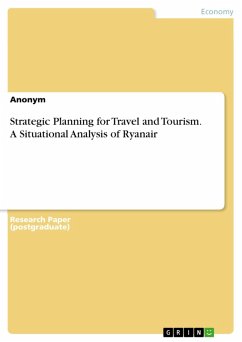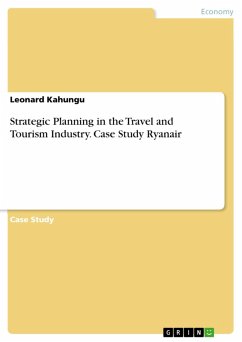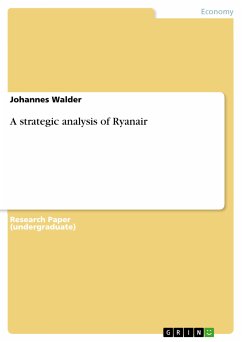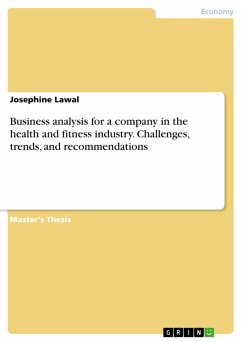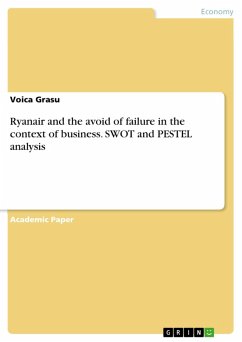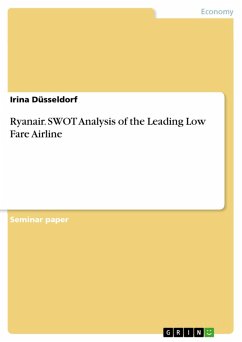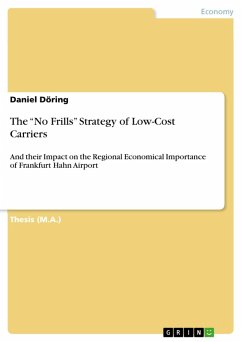Research Paper (postgraduate) from the year 2022 in the subject Business economics - Business Management, Corporate Governance, , language: English, abstract: The purpose of the report is to undertake a situational analysis of Ryanair. The situational analysis will be undertaken through the use of models and frameworks such as STEEPLE, Porter's Five Forces model, McKinsey's 7S framework and SWOT analysis. Thereafter, the challenges facing Ryanair will be explored. Secondly, the report will provide a logical and clear strategic plan that is linked to the findings of the situational analysis. The strategic plan will be developed to assist Ryanair to keep a competitive advantage and achieve the strategic objectives of the company. Ryanair is an Irish low-cost airline that was founded in 1984. In the 1st year of operation of the airline, over five thousand customers travelled between Ireland and London. By 1989, over 600,000 passengers were travelling via Ryanair. In the initial 4 years of the operation of the company, the company made a combined loss of £20 million. The management of the company changed in 1990 when Michael O'Leary was appointed as the CEO. O'Leary made several changes to Ryanair thus adopting a no-frills operational model as well as the reduction of the routes. In the next 6 years, the fleet was increased to over 21 leading to an increase in customers due to the low prices. Following the deregulation of EU air transportation regulations that restricted the low pricing policy of the firm, the firm took advantage and was able to increase its profitability and market share in low-cost airlines.
Dieser Download kann aus rechtlichen Gründen nur mit Rechnungsadresse in A, B, BG, CY, CZ, D, DK, EW, E, FIN, F, GR, HR, H, IRL, I, LT, L, LR, M, NL, PL, P, R, S, SLO, SK ausgeliefert werden.

